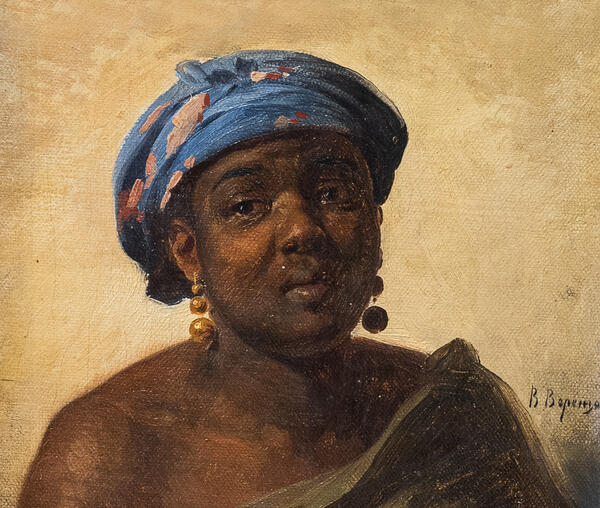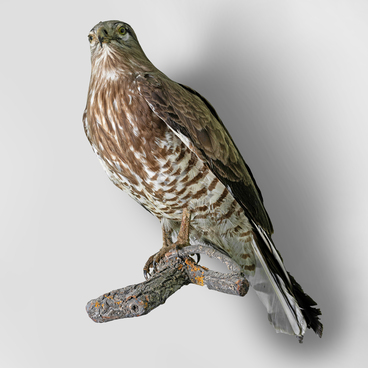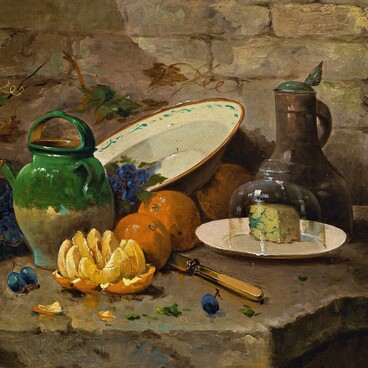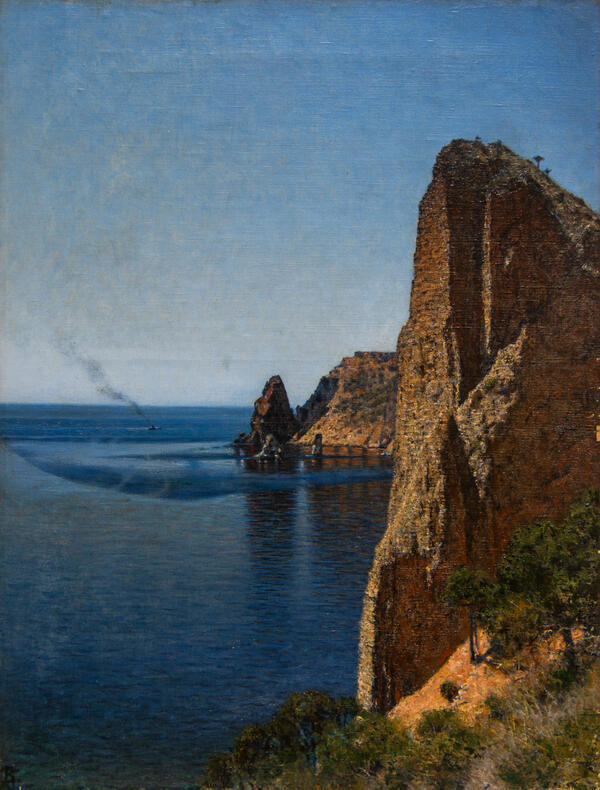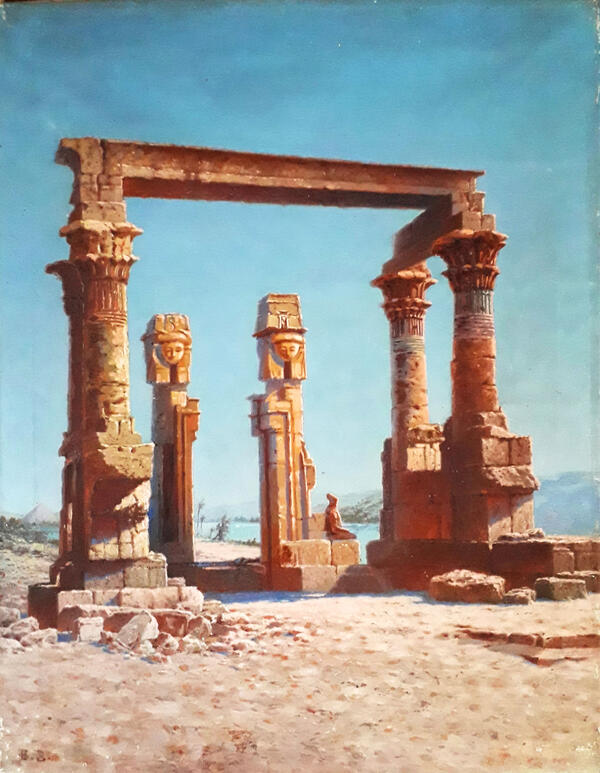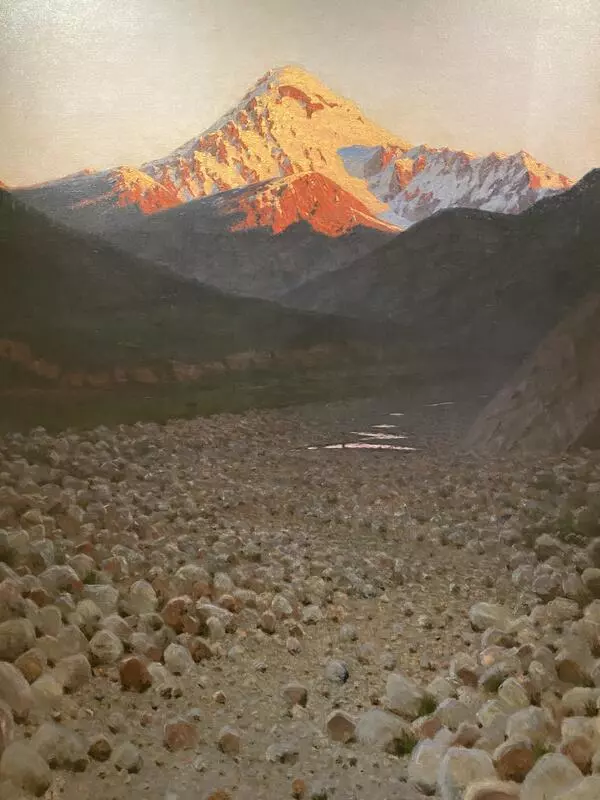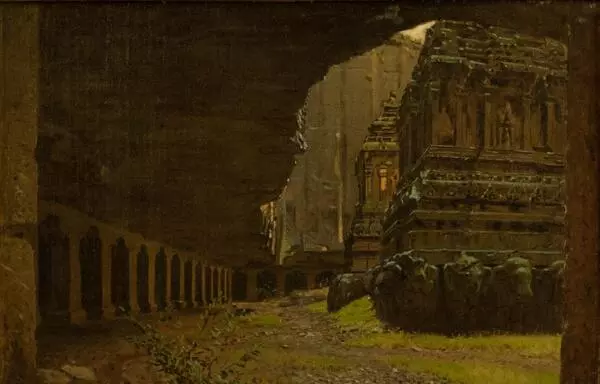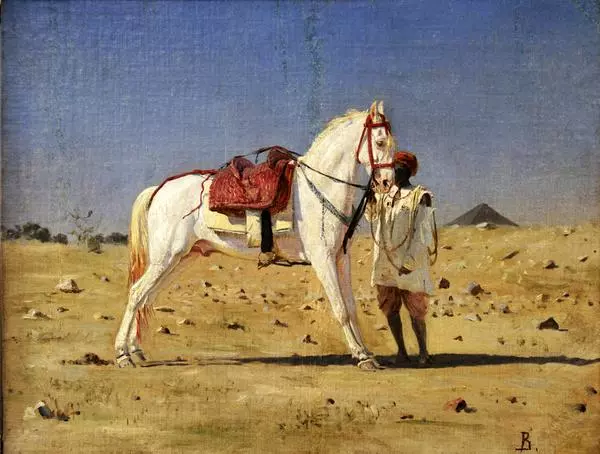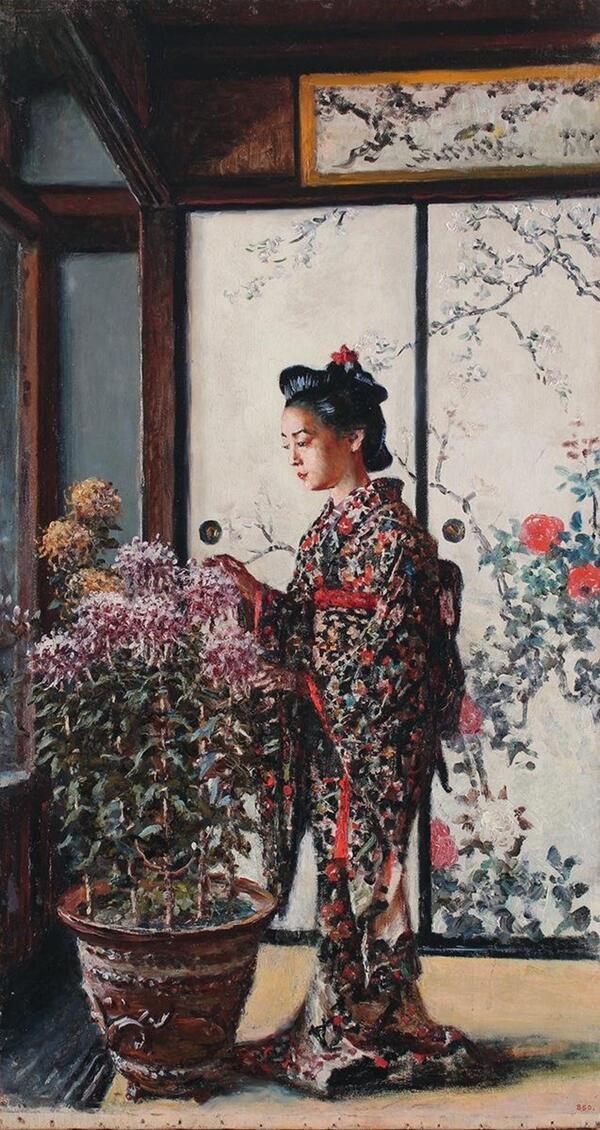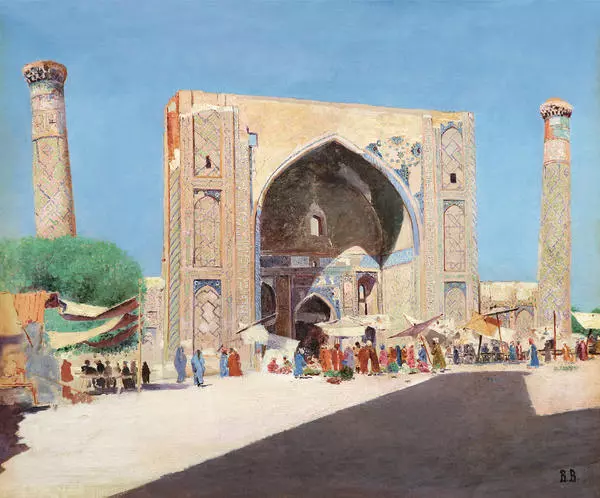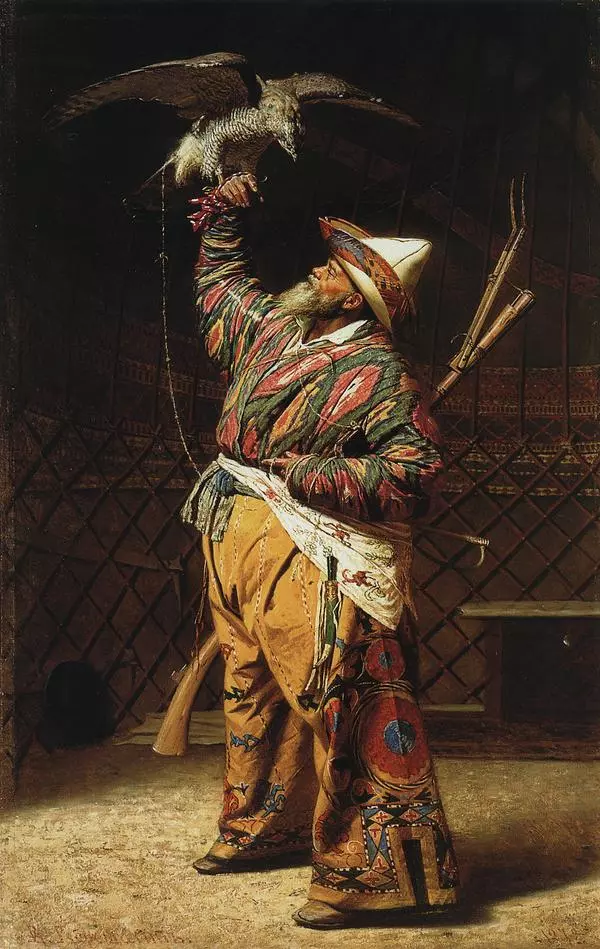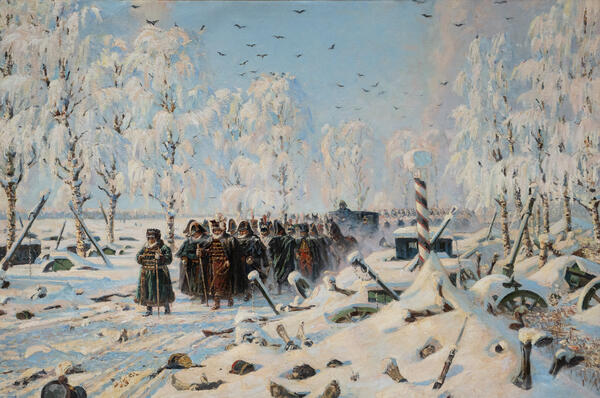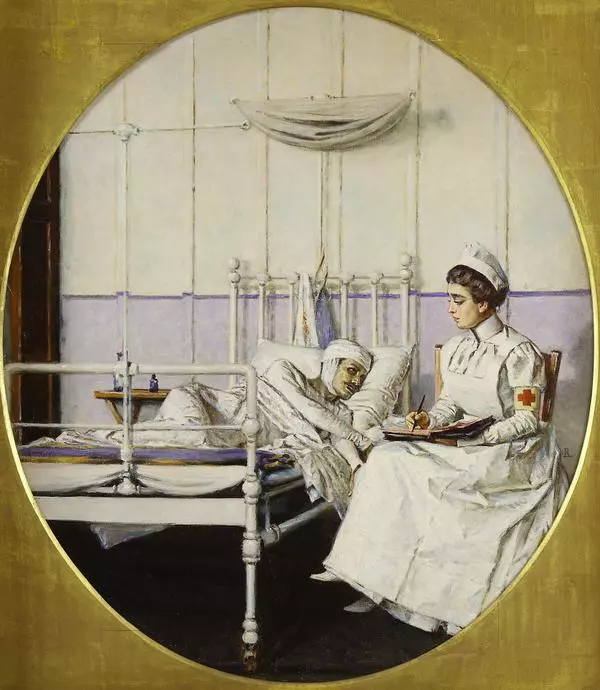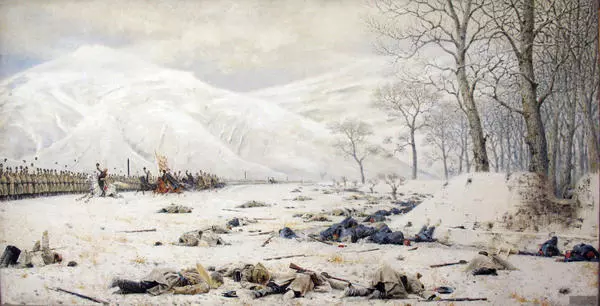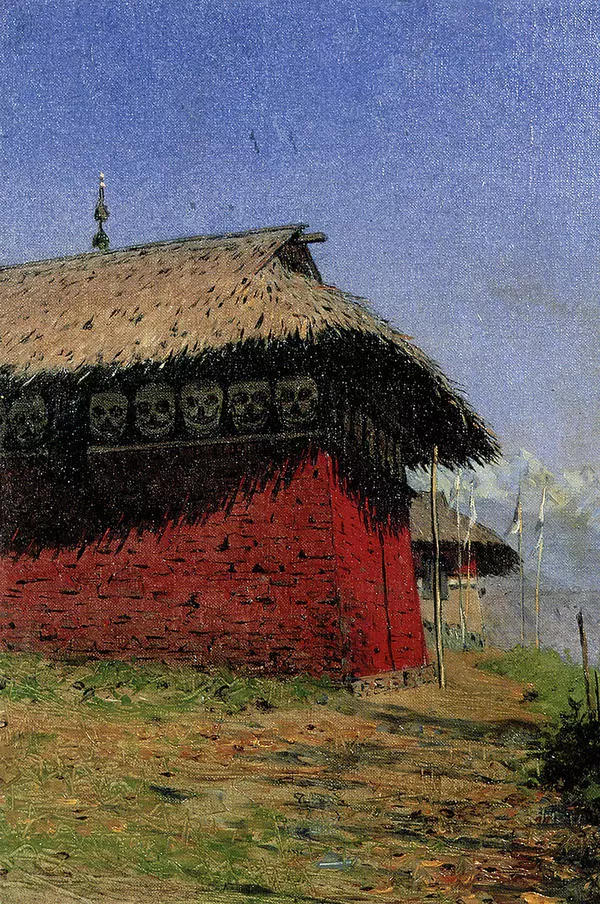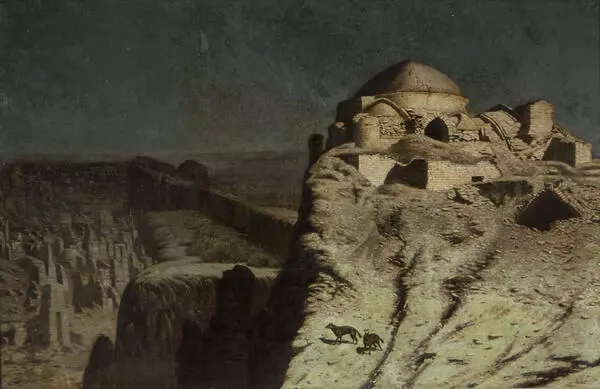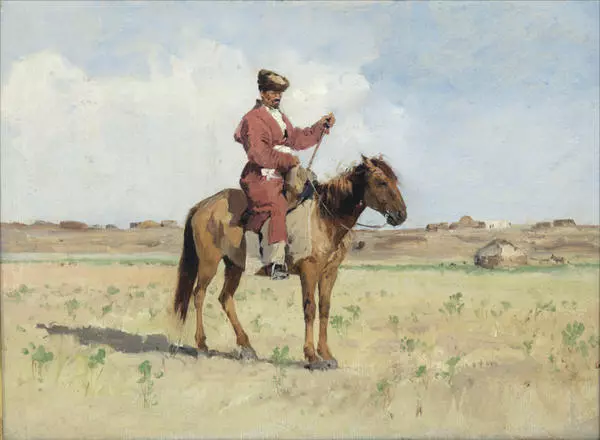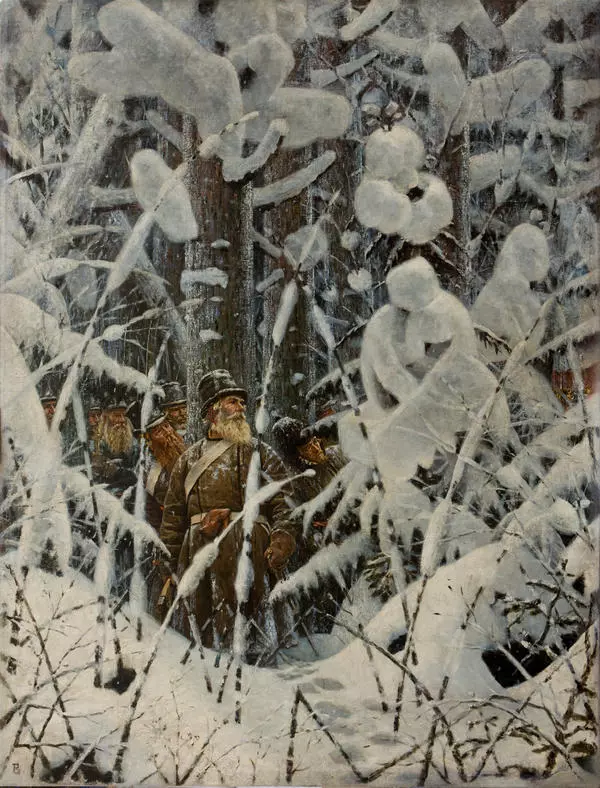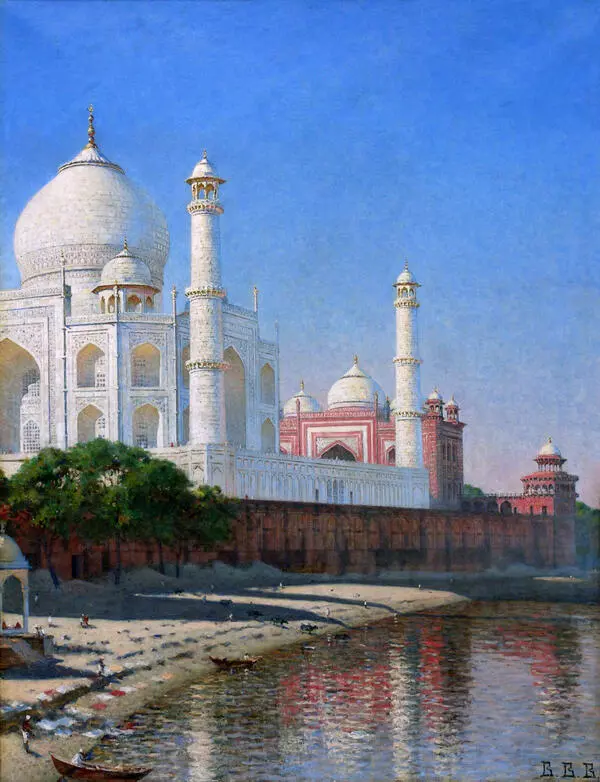The portrait of a woman in a colorful headdress called ‘Black Woman’ was one of the many ethnographic sketches that artist Vasily Vereshchagin made during his travels.
Vasily Vereshchagin was born in 1842 in Cherepovets to a family of the local marshal of the nobility. In 1850, Vasily was enrolled by his parents to the Alexander Cadet Corps for young children together with his brother Nikolay. Later Vereshchagin graduated from the Naval Cadet Corps and soon retired with the rank of midshipman.
Against his father’s will, Vereshchagin entered the Academy of Fine Arts in St. Petersburg. In 1863, the painter first went to the Caucasus so that he “could create interesting works freely”. There he spent a year and created his first paintings that depicted residents, everyday scenes, and landscapes. Then the artist went to Paris to study.
In 1867, Vereshchagin became a full-time artist to the Governor-General of Turkestan Konstantin Kaufman. A year later, he arrived in Samarkand, and soon the city was under siege because of a local revolt. The artist was awarded the Order of St. George of the fourth class for the defense of the fortress.
After Turkestan, Vereshchagin settled in Munich, where he continued working on Oriental subjects based on the studies and paintings that he brought with him. In 1873, he showed the completed “Turkestan series” at his first one-man show in London, and a year later his paintings were brought to St. Petersburg and Moscow.
Seven canvases under the common title “The Barbarians” became the basic ones in the series. They were called “The Apotheosis of War”, “Unawares Attack”, “Surrounding and Chasing”, “Presenting the Trophies”, “Triumph”, “Looking Out” and “Praising the Most High At the Saint”s Tomb’. The entire series was acquired by a patron of the arts Pavel Tretyakov.
In 1874, Vereshchagin went on a trip to India. He lived in Bombay, Delhi, Jaipur, visited the Eastern Himalayas, the border with Tibet and Kashmir. From this trip, the artist brought over 150 sketches.
When he learned of the outbreak of the Russian-Turkish war in 1877–1878, Vereshchagin voluntarily went to the Balkans as part of the Russian army. He participated in several battles and was seriously wounded. After returning to Paris, the artist completed the ‘Balkan series’, which included about 30 paintings. In 1879, they were exhibited together with the ‘Indian Series’ in London and Paris, and then in Europe and America for many years.
In 1884, Vereshchagin went to Palestine, where he made sketches, painted views of local nature, religious monuments, as well as everyday scenes. In the late 19th century, he traveled extensively through Russia, going to the White Sea and the Solovetsky Islands and visiting his homeland.
Vereshchagin died during the Russian-Japanese war: on March 31, 1904, the battleship Petropavlovsk, which was carrying Vice-Admiral Stepan Makarov, staff officers, and the artist, was blown up on a mine and sank.
Vasily Vereshchagin was born in 1842 in Cherepovets to a family of the local marshal of the nobility. In 1850, Vasily was enrolled by his parents to the Alexander Cadet Corps for young children together with his brother Nikolay. Later Vereshchagin graduated from the Naval Cadet Corps and soon retired with the rank of midshipman.
Against his father’s will, Vereshchagin entered the Academy of Fine Arts in St. Petersburg. In 1863, the painter first went to the Caucasus so that he “could create interesting works freely”. There he spent a year and created his first paintings that depicted residents, everyday scenes, and landscapes. Then the artist went to Paris to study.
In 1867, Vereshchagin became a full-time artist to the Governor-General of Turkestan Konstantin Kaufman. A year later, he arrived in Samarkand, and soon the city was under siege because of a local revolt. The artist was awarded the Order of St. George of the fourth class for the defense of the fortress.
After Turkestan, Vereshchagin settled in Munich, where he continued working on Oriental subjects based on the studies and paintings that he brought with him. In 1873, he showed the completed “Turkestan series” at his first one-man show in London, and a year later his paintings were brought to St. Petersburg and Moscow.
Seven canvases under the common title “The Barbarians” became the basic ones in the series. They were called “The Apotheosis of War”, “Unawares Attack”, “Surrounding and Chasing”, “Presenting the Trophies”, “Triumph”, “Looking Out” and “Praising the Most High At the Saint”s Tomb’. The entire series was acquired by a patron of the arts Pavel Tretyakov.
In 1874, Vereshchagin went on a trip to India. He lived in Bombay, Delhi, Jaipur, visited the Eastern Himalayas, the border with Tibet and Kashmir. From this trip, the artist brought over 150 sketches.
When he learned of the outbreak of the Russian-Turkish war in 1877–1878, Vereshchagin voluntarily went to the Balkans as part of the Russian army. He participated in several battles and was seriously wounded. After returning to Paris, the artist completed the ‘Balkan series’, which included about 30 paintings. In 1879, they were exhibited together with the ‘Indian Series’ in London and Paris, and then in Europe and America for many years.
In 1884, Vereshchagin went to Palestine, where he made sketches, painted views of local nature, religious monuments, as well as everyday scenes. In the late 19th century, he traveled extensively through Russia, going to the White Sea and the Solovetsky Islands and visiting his homeland.
Vereshchagin died during the Russian-Japanese war: on March 31, 1904, the battleship Petropavlovsk, which was carrying Vice-Admiral Stepan Makarov, staff officers, and the artist, was blown up on a mine and sank.

